Solar System, Planets & Nebulae
Most pics courtesy of NASA
Our Busy Solar System
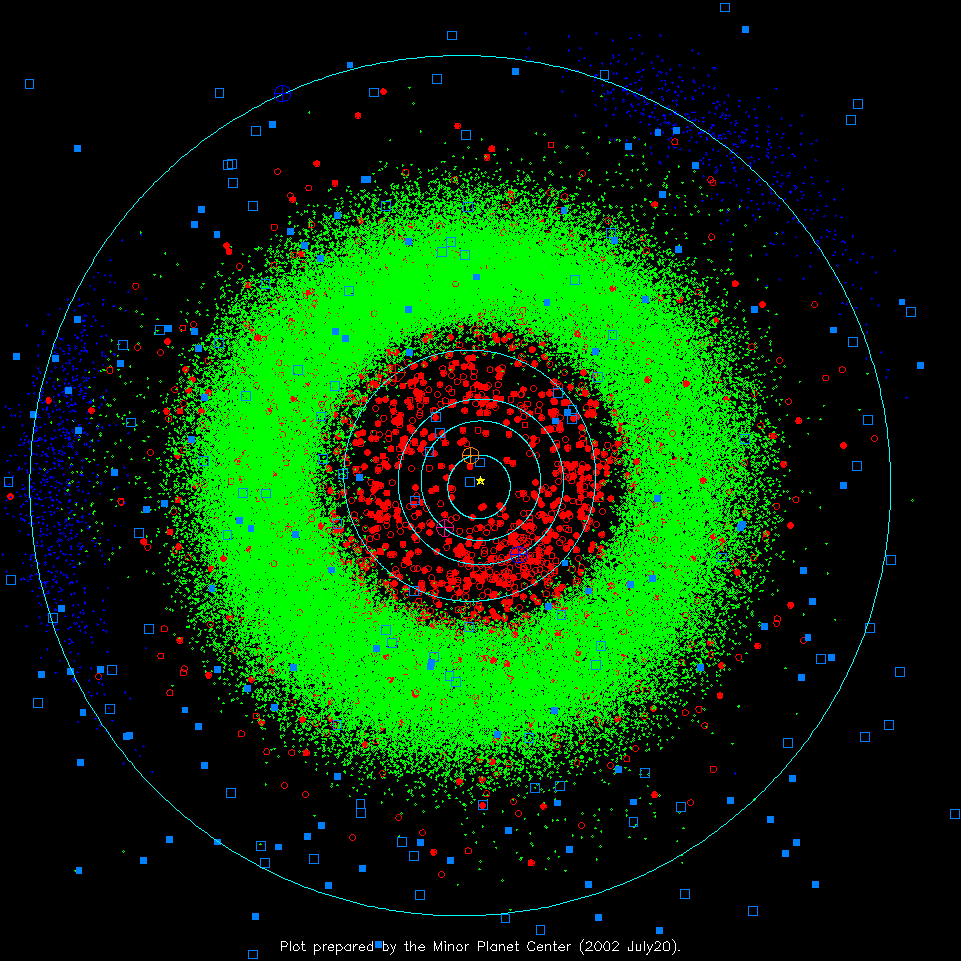

Explanation: Our Solar System is a busy place. Although the major planets get the most press, a swarm of rocks, comets, and asteroids also exist. The above plot shows the placement of known inner Solar System objects on 2002 July 20. The light blue lines indicate the orbits of planets. The green dots indicate asteroids, officially known as minor planets. The red dots indicate asteroids that come within 1.3 Earth-Sun distances (AU) of the Sun and so pose an increased (although small) collision risk with the Earth. Comets appear as dark blue squares, while dark blue points are Jupiter Trojans, asteroids that orbit just ahead of, or just behind Jupiter. Note that most asteroids of the inner Solar System orbit between Mars and Jupiter in the main asteroid belt. Every day this plot shifts with objects nearer the Sun typically shifting the most.
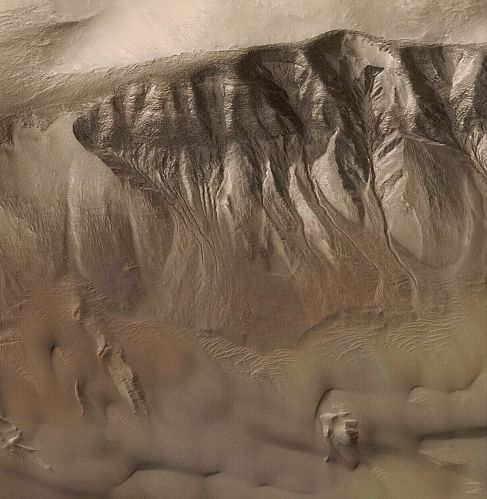
Explanation: The Gullies of Mars would probably not have been sensational enough for the title of a vintage Edgar Rice Burroughs story about the Red Planet. But it would get the attention of planetary scientists today. First identified in high resolution images of Mars recorded by the orbiting Mars Global Surveyor spacecraft, the gullies are interpreted as startling evidence that liquid water flowed across the martian surface in geologically recent times. Similar channels on Earth are formed by flowing water, but on Mars the temperature is normally too cold and the atmosphere too thin to sustain liquid water. Still, it is thought possible that water did burst out from underground layers and remain liquid long enough to erode the gullies, while alternative explanations suggest the erosion was produced by a flowing jumble of solid and gaseous carbon dioxide. Spanning a few kilometers along the wall of an impact crater this high resolution image from Mars Global Surveyor shows typical martian gullies near the top of the crater wall giving way to sand dunes toward the crater floor. Whitish frost is visible near the top and on the dark sand dunes below. The muted colors were synthesized from wide angle image data.
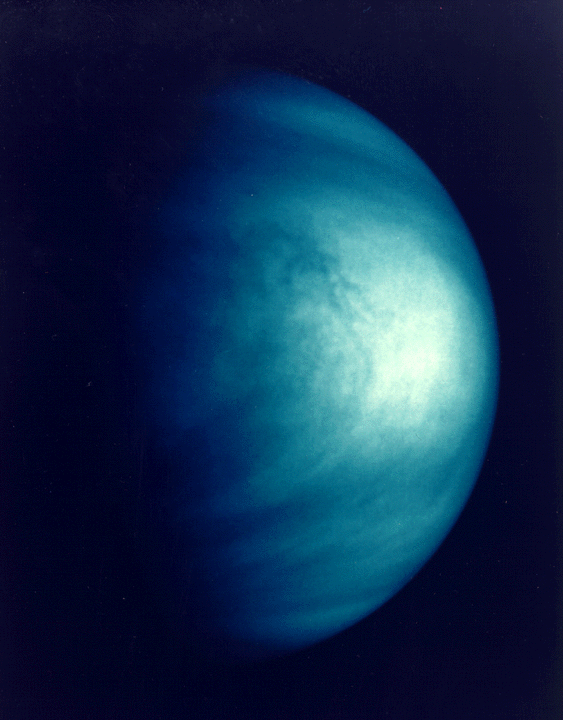
Explanation: Venus, the second closest planet to the Sun, is a popular way-point for spacecraft headed for the gas giant planets in the outer reaches of the solar system. Why visit Venus first? Using a "gravity assist " maneuver, spacecraft can swing by planets and gain energy during their brief encounter saving fuel for use at the end of their long interplanetary voyage. This colorized image of Venus was recorded by the Jupiter-bound Galileo spacecraft shortly after its gravity assist flyby of Venus in February of 1990. Galileo's glimpse of the veiled planet shows structure in swirling sulfuric acid clouds. The bright area is sunlight glinting off the upper cloud deck. A recent intriguing but controversial hypothesis holds that living microbes might exist in the upper clouds of Venus.
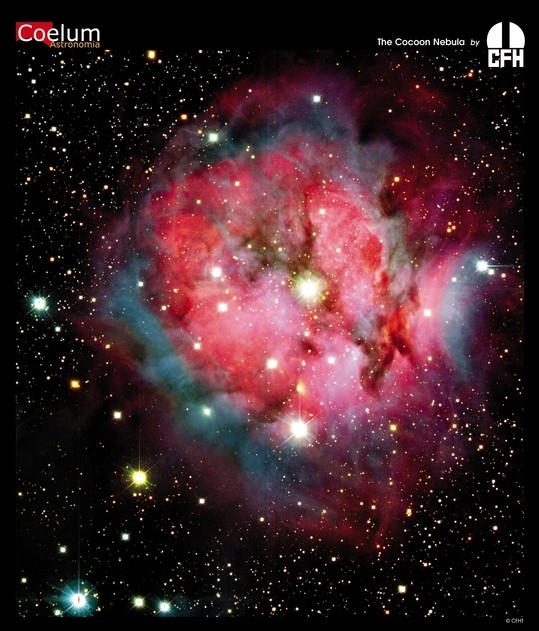
Explanation: How did this nebula get created? The Cocoon Nebula, cataloged as IC 5146, is a strikingly beautiful nebula located about 4,000 light years away toward the constellation of Cygnus. Inside the Cocoon is a newly developing open cluster of stars. Like other stellar nurseries, the Cocoon Nebula is, at the same time, an emission nebula, a reflection nebula, and an absorption nebula. Speculation based on recent measurements holds that the massive star in the center of the above image opened a hole in an existing molecular cloud through which much of the glowing material flows. The same star, which formed about 100,000 years ago, now provides the energy source for much of the emitted and reflected light from this nebula.
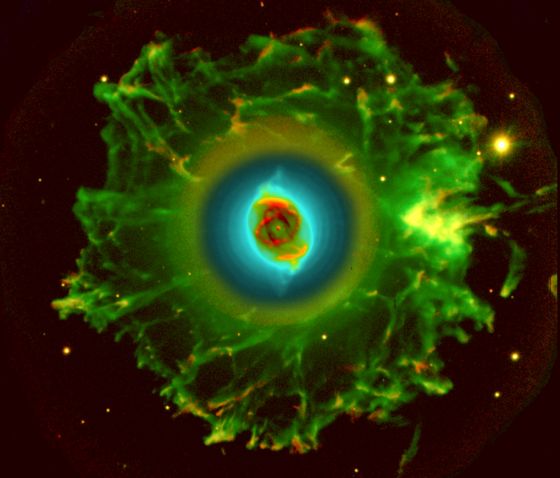
Explanation: The Cat's Eye Nebula (NGC 6543) is one of the best known planetary nebulae in the sky. Its haunting symmetries are seen in the very central region of this stunning false-color picture, processed to reveal the enormous but extremely faint halo of gaseous material, over three light-years across, which surrounds the brighter, familiar planetary nebula. Made with data from the Nordic Optical Telescope in the Canary Islands, the composite picture shows emission from nitrogen atoms as red and oxygen atoms as green and blue shades. Planetary nebulae have long been appreciated as a final phase in the life of a sun-like star. Only much more recently however, have some planetaries been found to have halos like this one, likely formed of material shrugged off during earlier active episodes in the star's evolution. While the planetary nebula phase is thought to last for around 10,000 years, astronomers estimate the age of the outer filamentary portions of this halo to be 50,000 to 90,000 years.
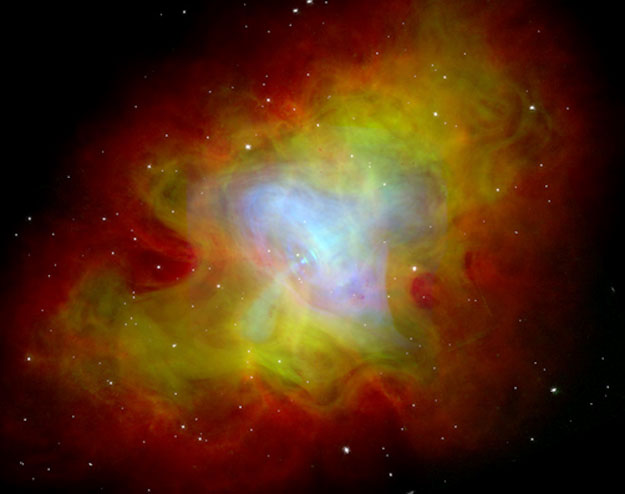
Explanation: How does a city-sized neutron star power the vast Crab Nebula? The expulsion of wisps of hot gas at high speeds appears to be at least part of the answer. Yesterday, time-lapse movies taken from both the Chandra X-ray Observatory and the Hubble Space Telescope were released showing a wisp of gas moving out at about half the speed of light. Wisps like this likely result from tremendous electric voltages created by the central pulsar, a rapidly rotating, magnetized, central neutron star. The hot plasma strikes existing gas, causing it to glow in colors across the electromagnetic spectrum. Pictured above is a composite image of the center of the Crab Nebula where red represents radio emission, green represents visible emission, and blue represents X-ray emission. The dot at the very center is the hot pulsar spinning 30 times per second.
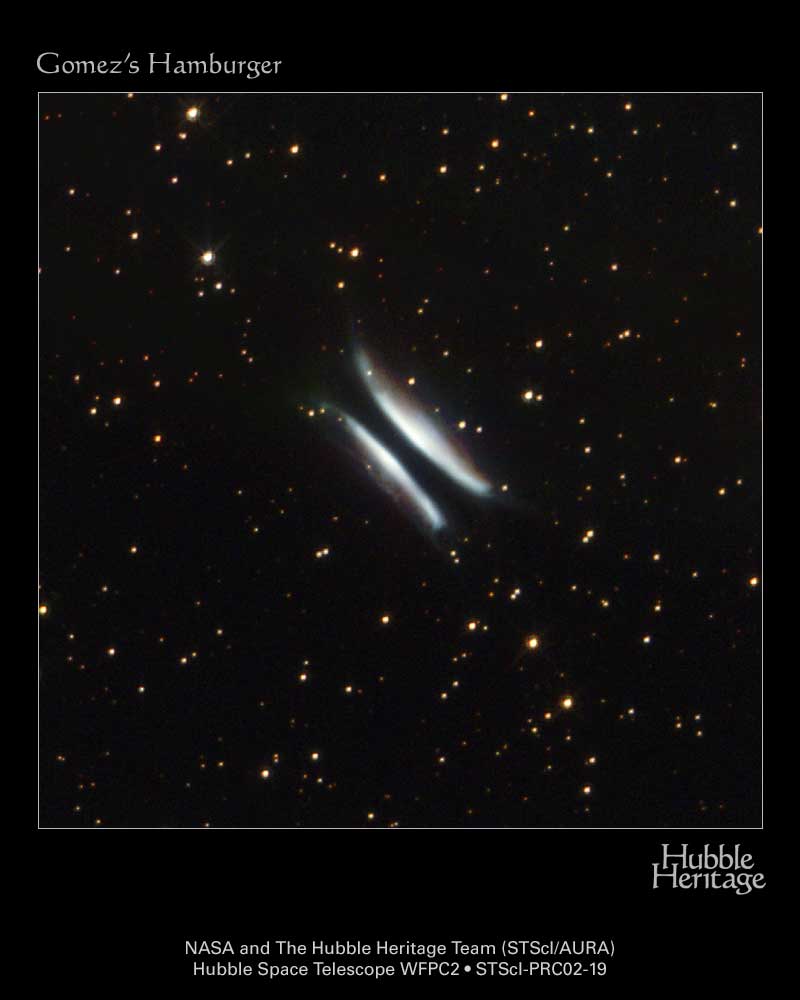
Explanation: What, in heaven, is that? Sometimes, astronomers see things in the sky they don't immediately understand. In 1985, this happened to Arturo Gomez, and the object became known as Gomez's Hamburger for its distinctive yet familiar shape. After some investigation, the object was identified as a proto-planetary nebula, a gas cloud emitted by a Sun-like star just after its central hydrogen fuel has all been fused to helium. Gomez's Hamburger is on its way to becoming a full-fledged planetary nebula in a few thousand years. The light seen (the bun) is reflected by dust from the central star, although the star itself is obscured by a thick dust disk that runs across the middle (the patty). Gomez's Hamburger, pictured above in a recent image from the Hubble Space Telescope, is only a fraction of a light year across but located approximately 10,000 light years away towards the constellation of Sagittarius.
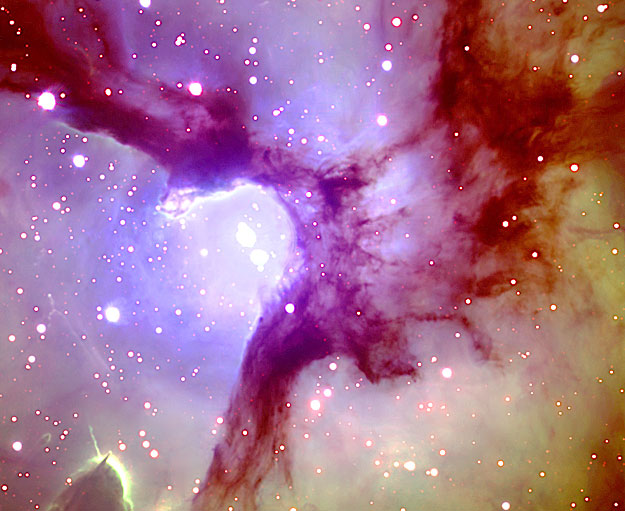
Explanation: Clouds of glowing gas mingle with lanes of dark dust in the Trifid Nebula, a star forming region toward the constellation of Sagittarius. In the center, the three huge dark dust lanes that give the Trifid its name all come together. Mountains of opaque dust appear on the lower left, while filaments of dust are visible threaded throughout the nebula. A single massive star visible near the center causes much of the Trifid's glow. The Trifid, also known as M20, is only about 300,000 years old, making it among the youngest emission nebula known. The nebula lies about 5000 light years away and part pictured above spans about 20 light years. The above false-color digitally enhanced image was taken with the Gemini North telescope earlier this month (June 2002).
|